

Table of contents
- Plants for shady areas
- Green and foliage plants
- Flowering plants for shady areas
- Shade tolerant ground cover
- Different types of shadows
- penumbra
- full shade
- light shadow
- open shadow
Not all garden areas are always spoiled by sunshine. With the right plants, however, impressive bright spots can also be created in the shade garden. Root competition from larger trees can be problematic. Nevertheless, the play of light and shadow in natural or artificially created shadow areas also has its advantages. Free-standing trees and shrubs grow here as well as green and flowering plants and those with special foliage or fruit decoration.
Plants for shady areas
Well selected and placed correctly, plants can be used for shady areas to underplant trees or to green slopes, streams and walls. They can function as a background plant, in the foreground, or as an area ground cover. There are several attractive flowering or ornamental foliage shade plants for almost any area in the shade.
Green and foliage plants
Shrub Ivy 'Arborescens'
Unlike traditional ivy, this shrub ivy is non-climbing. With its dark green leaves and decorative fruits and flowers, it can be a very decorative and creative element in the garden. The yellow-green flowers appear in very decorative umbels in September. Shrub ivy grows upright and compact with heights of up to 200 cm. He feels comfortable in partial shade and shade.
Tip:
This shrub ivy does not need neighboring beds that emphasize its attractiveness. He also looks very sublime and noble on his own.
Japanese mountain grass (Hakonechloa macra)
The Japanese mountain grass is a decorative ornamental grass for the penumbra. Its lush green, long, overhanging leaves make this grass a real eye-catcher. It blends elegantly into shady perennial beds and is perfect as a shrub underplanting. But only with the fantastic autumn colors of the leaves does the Japanese mountain grass come into its own. It can be combined very well with black snake beard, hostas and elfflower, which also feel comfortable in shady to partially shaded places.
Tabular leaf 'Astilboides tabularis'
The blackboard leaf is an exotic candidate that does very well in the semi-shade in the home garden. Its huge leaves, which can reach diameters of up to 90 cm, make it an exceptional foliage plant. In contrast, the small greenish-white, panicle-shaped flowers are rather inconspicuous but still beautiful. Flowering time is in June. The blackboard grows approx. 150 cm in width and 100 cm in height.
ferns
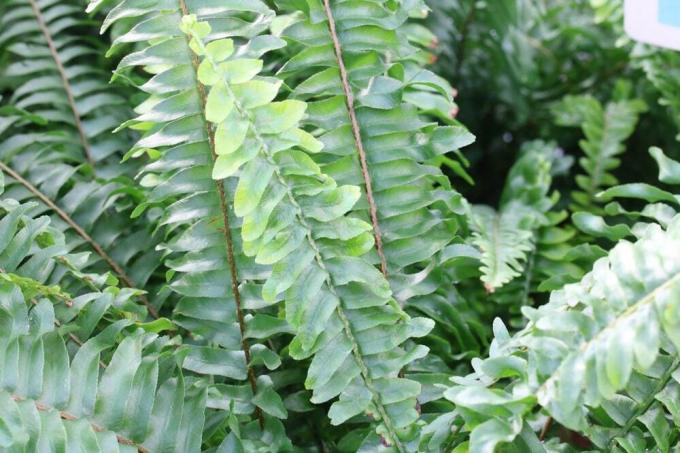
Ferns are fascinating plants that have a somewhat whimsical appearance when they sprout. In the shade and semi-shade you will find ideal conditions. They come in different sizes, growth forms and color of the leaves. The ornamental fern 'Japanese Painting', the brown spleen fern (Asplenium trichomanes) but also brocade fern, Glossy shield fern and the ostrich fern (Matteuccia struthiopteris), which can grow up to 130 cm high, are particularly beautiful specimens.
hosts
Hostas, also known as sweetheart lilies, are the stars among the shade and foliage plants. These shade beauties are especially popular because of their unique leaf coloration, be it solid or patterned, and the variety of leaf shapes. No less attractive are the flower clusters that rise from July to August on long flower stalks above the colorful foliage.
Tip:
Hostas are shown to their best advantage alone but also in combination with other hostas.
Purplebells
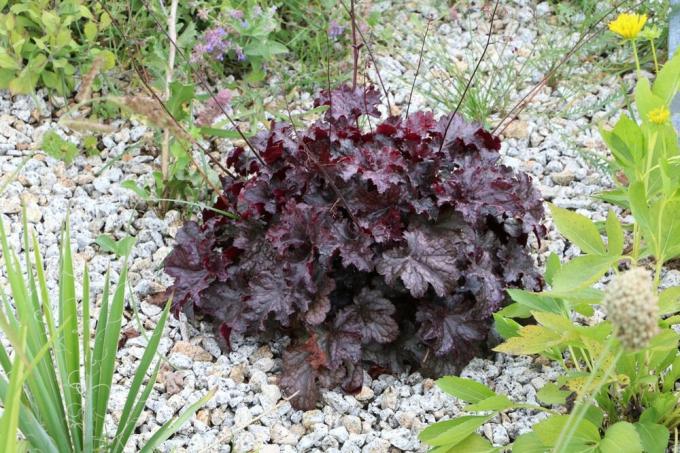
The purple bell, which belongs to the Saxifrage family, is the epitome of a decorative leaf plant. It is also known as the shadow bell.
- It can be sunny but also in partial shade
- An attractive plant with many leaf shapes and colors
- The foliage makes up the real ornamental value of these enchanting plants
- Leaves may be lobed, ruffled, or curled
The colors of the leaves range from a delicate, dark green to yellow-orange and dark red to silver, violet and bronze tones. The growth heights vary between 15 and 90 cm depending on the variety.
Caucasus forget-me-not 'Variegata'
This ornamental foliage plant features large, heart-shaped, white-margined, green and yellowish-white variegated leaves. Together with the bright blue flowers that appear in spring, it provides points of light in shady areas. With growth heights of up to 50 cm, the Caucasus forget-me-not remains rather small.
Arum 'Arum italicum'
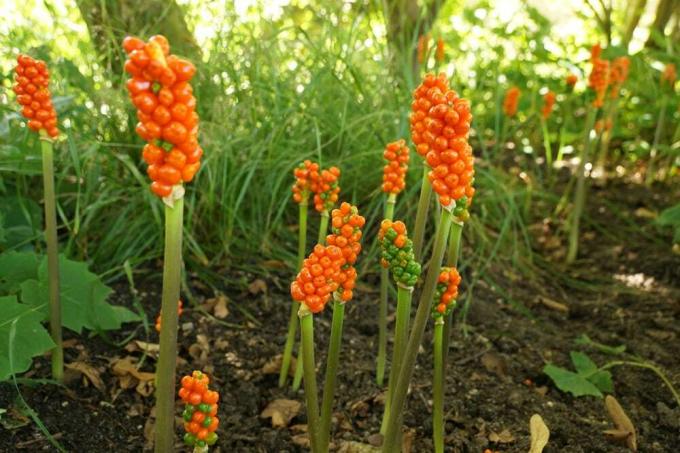
The large, arrow-shaped leaves of this extravagant decorative leaf plant do not sprout until autumn and withdraw completely after flowering. They are deep green and streaked with silver leaf veins. However, their greatest adornment are the bright red berries, which sit on erect stems in autumn. The small, pale yellow flowers appear in spring. This fascinating arum plant can grow up to 60 cm high.
Flowering plants for shady areas
Silver Candle 'Atropurpurea'
What is special about the silver candle 'Atropurpurea', in addition to the feathery foliage, are the slender, radiant white flower spikes, which appear relatively late, around September to October. With the exception of the flowers, the entire perennial shines in a striking crimson. It reaches heights of growth of up to 180 cm and feels equally at home in partial shade and shade.
Moon Viola / Wild Silver Leaf 'Lunaria rediviva'
The moon violet, which is up to 120 cm high, impresses with its pleasant floral scent, which is particularly intense at night. The light to dark violet flowers that adorn the moon violet from May to July are also beautiful to look at. Even in autumn, this plant is still very decorative thanks to its silvery pods. It thrives in both partial shade and shade.
Toad lily 'Tricyrtis hirta'
The white, red-speckled flowers of this extravagant perennial bear a great deal of resemblance to a real orchid. From August to October they stand high above the lush green leaves and reach heights of around 50 cm. Toad lilies are still a rarity in domestic gardens. It thrives very well in both partial shade and shade.
Trefoil/Forest Lily Trillium grandiflorum 'Pleno'
This trefoil is an extraordinary beauty. The bright white flowers are filled, which is rather rare in the forest lily. Flowering time is from April to May and the plant height is approx. 40 cm. In dark locations, the white, 8-12 cm large flowers set unique accents. They are framed by three leaves at the end of the stems.
Tip:
Pretty companion plants for the trefoil are z. B. Chessboard flowers or the Waldsteinia.
Goat's Beard / Geißbart (Aruncus)
The highlight of this long-lived and stately shade perennial is its magnificent white, very filigree flower panicles, which are very similar to those of astilbes. While the male flowers have a creamy white coloration, the female ones are pure white. They form a beautiful contrast to the up to 100 cm long, fresh green pinnate leaves. Flowering time is in June/July, when the goat's beard reaches a growth height of up to 200 cm. It tolerates both semi-shady and shady locations.
Shade tolerant ground cover
Sulfur-colored Elf Flower Epimedium x versicolor 'Sulphureum'
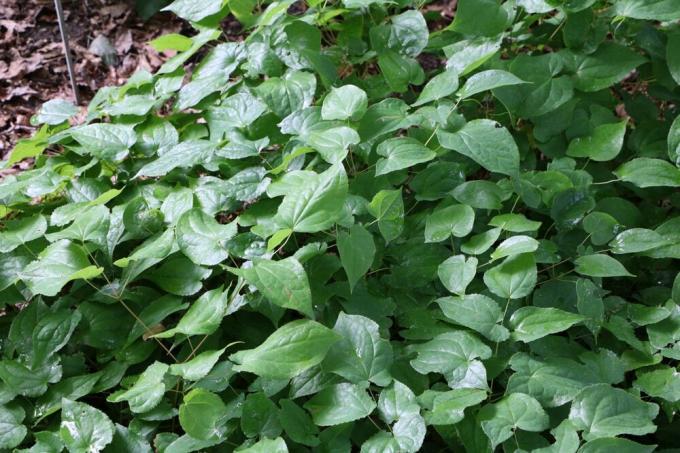
The sulphur-colored elven flower quickly forms dense carpets of leaves due to its branched growth and runners. The shoots of this plant are bronze in color with a touch of red. Later the leaves are glossy green with reddish-brown markings. From April, the sulphur-yellow flowers arranged in racemes, each with up to 25 individual flowers, appear above the slightly toothed leaves. They are suitable for semi-shady to shady locations as large-scale ground cover.
Forest Phlox 'Clouds of Perfume'
The first thing you notice about this pretty plant is the intense scent of the large, purplish-blue, umbel-shaped flowers. Its lush blooms begin as early as April and continue into June. In contrast to conventional phlox, this type of phlox has a creeping habit, making it very suitable as an underplant for late-growing perennials and larger trees. This plant does best in a partially shaded spot.
Commemorative Gem (Omphalodes verna)
This extremely adaptable ground cover, which actually belongs to the perennials, is covered in countless small, sky-blue flowers. The memorial plant is a noble spring bloomer that forms dense stands over time. A single plant grows up to 12 cm high and 25 cm wide. The plants move in from about autumn, only the root ball overwinters in the ground. They will sprout again in the spring. Planting in groups is recommended. It can unfold its full splendor best in semi-shade.
Low fat man Pachysandra terminalis 'Compacta'
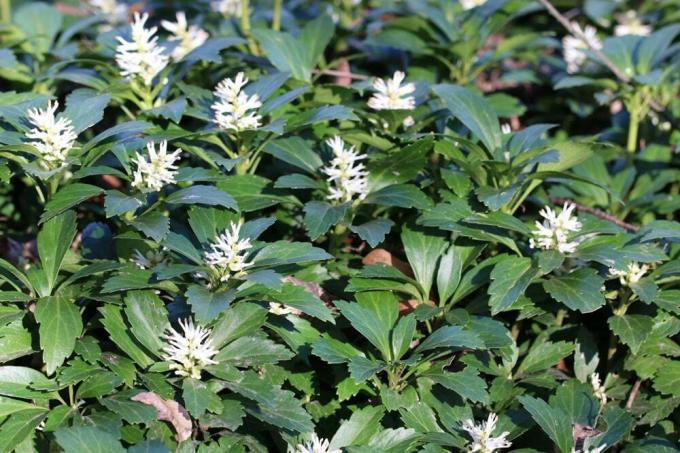
The evergreen thick man, also known as shadow green, with its decorative dark green foliage ensures dense growth of small or large areas. It copes very well with root competition from trees or other plants and a place in the shade. Its growth is short and compact with a maximum of 12 cm in height and up to 40 cm in width. From April to May, delicate spikes of white flowers appear on erect stems.
Different types of shadows
Which hobby gardener does not know that; shady areas where nothing just wants to grow. Large trees are not the only sources of shade, walls, hedges and screens also cast shadows. In order to find the right plants for such places, one must choose between partial and full shade, differentiate between light and open shadows, because shadows are different in all areas pronounced.
The transitions from one type of shadow to another are usually fluid. Many plants are very flexible and grow in different shade areas. Despite everything, a corresponding assignment is important and decisive for the success or failure of the plants. But where exactly are the differences?
penumbra
Plants that prefer partial shade usually cannot do completely without sun. They need a few hours of sun either in the morning or evening to carry out the vital photosynthesis. Half-shady areas are created, for example, in front of walls and hedges or under dense treetops. They are sunny for up to four hours over the course of a day and shaded the rest of the time. Most partial shade plants tolerate morning sun better than afternoon sun and will also tolerate short periods of direct or direct sunlight. blazing sun.
full shade
Full shade areas are found primarily under deciduous trees, evergreen shrubs and conifers, and on the north side of tall buildings and walls.
- Plants in full shade get by with a minimum amount of light
- Root competition from larger trees plays an important role
- Tree roots take up a large part of the soil volume
- This sometimes makes underplanting difficult
- Shady areas under coniferous trees are particularly problematic
- Humus from the needles makes planting almost impossible
- The condition of these soils can be improved
- For example, by working in compost, cattle or horse manure
- This can increase the chance of biodiversity
light shadow
Light shade means that light is constantly falling on the plants through the canopy. Shorter periods of shadow and sunshine alternate constantly. The whole thing is amplified by the wind. It sets the treetop in motion and thus ensures a recurring play of light and shadow. Almost all plants that also thrive in semi-shade grow in light shade.
open shadow
Plants that grow in the open shade get adequate daylight at all times but no direct sunlight. These areas are open to the sky, meaning there is no irritating canopy of canopy to block or significantly restrict light. Typical areas in open shade, also known as shady locations, are courtyards where the light-colored walls of buildings reflect sunlight. One or the other light-hungry plant can also develop well in these locations.
 garden editorial
garden editorial I write about everything that interests me in my garden.
Learn more about grooming

send plants | 7 tips for sending flowers
Sending plants requires good preparation. Not only the type of packaging is of great importance, so that the goods arrive safely at their destination. The season is also important. It depends on how well the plants survive the transport.

30 office plants for a better indoor climate
A bit of green in the office not only looks pretty, but can also significantly improve the indoor climate. For example, indoor plants increase humidity, can clean the air and, if they are large enough, even dampen noise.
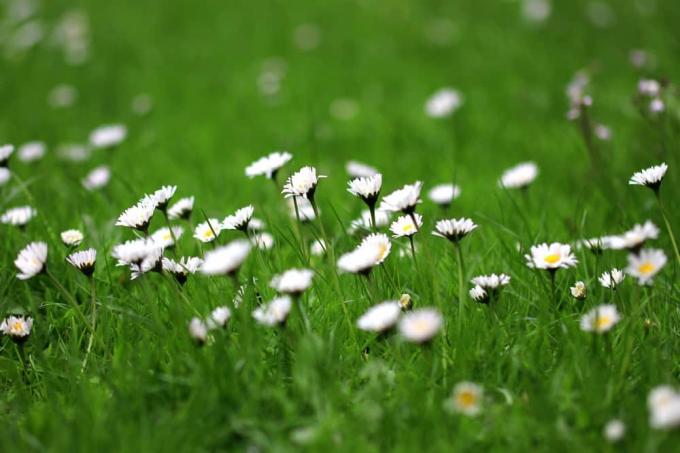
21 edible flowers | What flowers can you eat?
Edible flowers can be used for many dishes in the kitchen, not just as decoration. The flavors range from sugary-sweet to peppery-spicy and give food and drinks a very special touch.
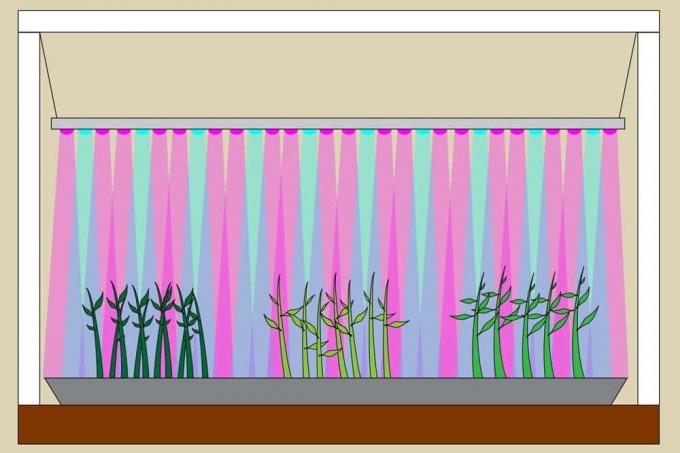
Everything about LED plant lights: Build plant lights yourself
Plants need light. In the absence of it, they suffer or perish. Sometimes, conventional daylight just isn't enough to meet a plant's light needs. Then LED plant lighting can help. How to build such a plant light yourself is here.
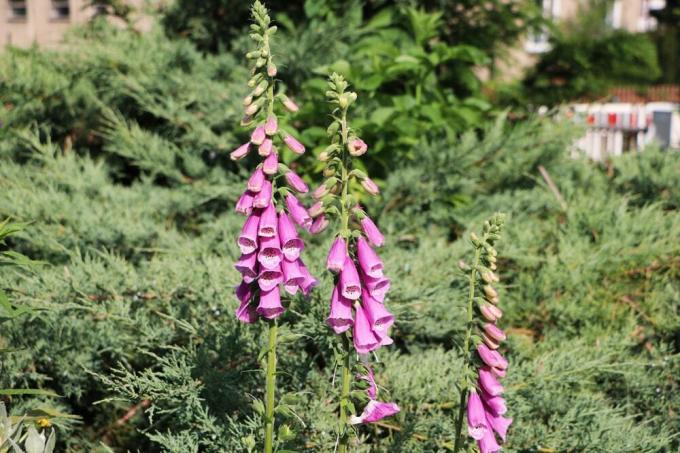
Forest flowers: 55 flowering species in the forest sorted by color
When the local forests dress in picturesque shades of color throughout the year, the numerous forest flowers in Germany present themselves and inspire with their blaze of colour. From purple to red to white and yellow, the German forests have a lot to offer.

Scented plants: list from A-Z for garden, apartment and balcony
Flowers, bushes and trees not only set color accents in the garden or inspire with their magnificent growth, they spoil the nose with their scent. Humans have always been attracted to fragrant plants and kept them close by.



